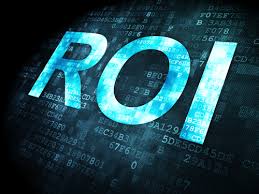The lead conversion rate is a vital metric that reflects the effectiveness of your sales and marketing efforts. It measures the percentage of leads that successfully convert into paying customers. Without anticipating demand, you will make poor pricing decisions. In addition, it affects pricing, inventory costs, customer satisfaction, supply chain management, and profitability. There are several reasons demand forecasting is essential for businesses:
Estimate Profit Margins: Demand forecasting helps with pricing, business planning, targeting, budgeting, and estimating profit margins. You can create an idea for future sales and make an informed plan. Production planning and future capacity planning are other things you could start with. Demand forecasting helps you ensure that your supply meets demand.
Increase Turnover: This allows companies to optimize their inventory, increase turnover, and reduce inventory costs. This shows future cash flow. You create a more accurate budget for suppliers and other operating expenses. It also allows more investment in business growth.
Smooth Business Operations: Demand forecasting can identify and resolve any issues in sales pipelines and supply chain operations to ensure smooth business operations 24/7. Forward forecasting also means that companies can know in advance when they need to add staff and other resources. During peak hours, it is necessary to continue the operations smoothly.
Revenue Boost: A high lead conversion rate means more customers and increased revenue. It directly impacts your bottom line and helps fuel business growth.
Efficiency Indicator: Monitoring lead conversion rate helps you evaluate the efficiency of your lead generation and nurturing strategies. It allows you to identify strengths and weaknesses in your conversion process.
Resource Optimization: By optimizing your lead conversion rate, you can get more value out of your existing leads. Instead of continuously chasing new leads, you can focus on converting and nurturing the ones you already have.
Marketing ROI: Calculating the lead conversion rate helps determine the return on investment of your marketing campaigns. It enables you to allocate resources effectively and invest in strategies that yield higher conversions.
Customer Insights: Analyzing the lead conversion rate provides valuable insights into your target audience and their preferences. You can refine your approach and tailor your marketing messages to increase conversions.
Competitive Advantage: A higher lead conversion rate sets you apart from your competitors. It signifies that your sales and marketing team is effectively guiding prospects through the buying journey, ultimately securing deals.
Convert Potential into Profit: Lead conversion rate is the measure of turning potential into profit. It’s not just about generating leads but converting them into loyal customers that fuels business success.
Business Growth: Optimizing your lead conversion rate requires continuous monitoring, analysis, and proactive adjustments to your sales and marketing strategies. Focus on improving this crucial metric of lead conversion to drive revenue and take your business to new heights.
Conclusion: Forward forecasting is a technique for estimating future consumer demand over time using historical data and information. Proper demand forecasting provides organizations with valuable information about their opportunities in current and other markets, enabling managers to make informed pricing, business growth plans, and marketing potential decisions.





